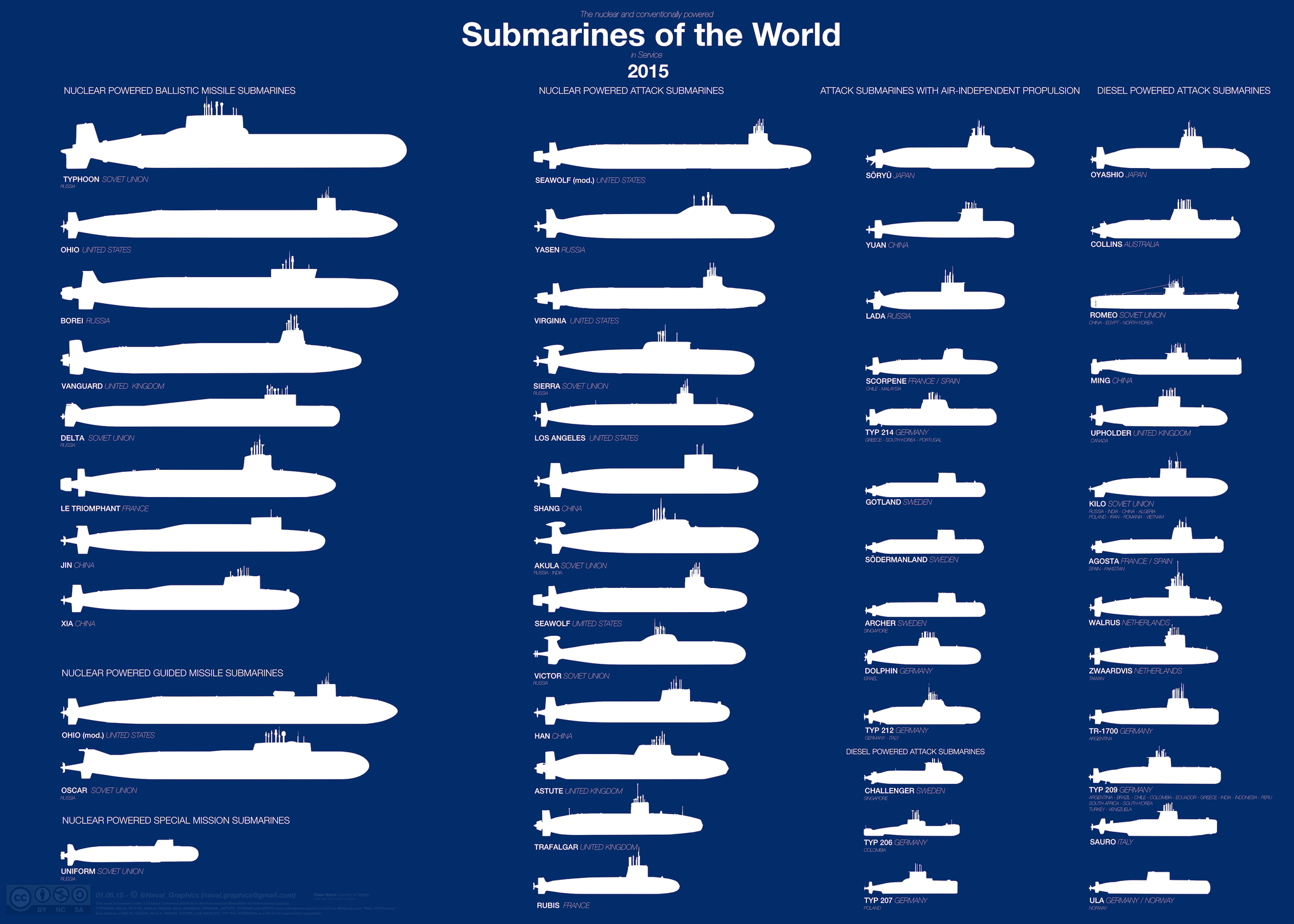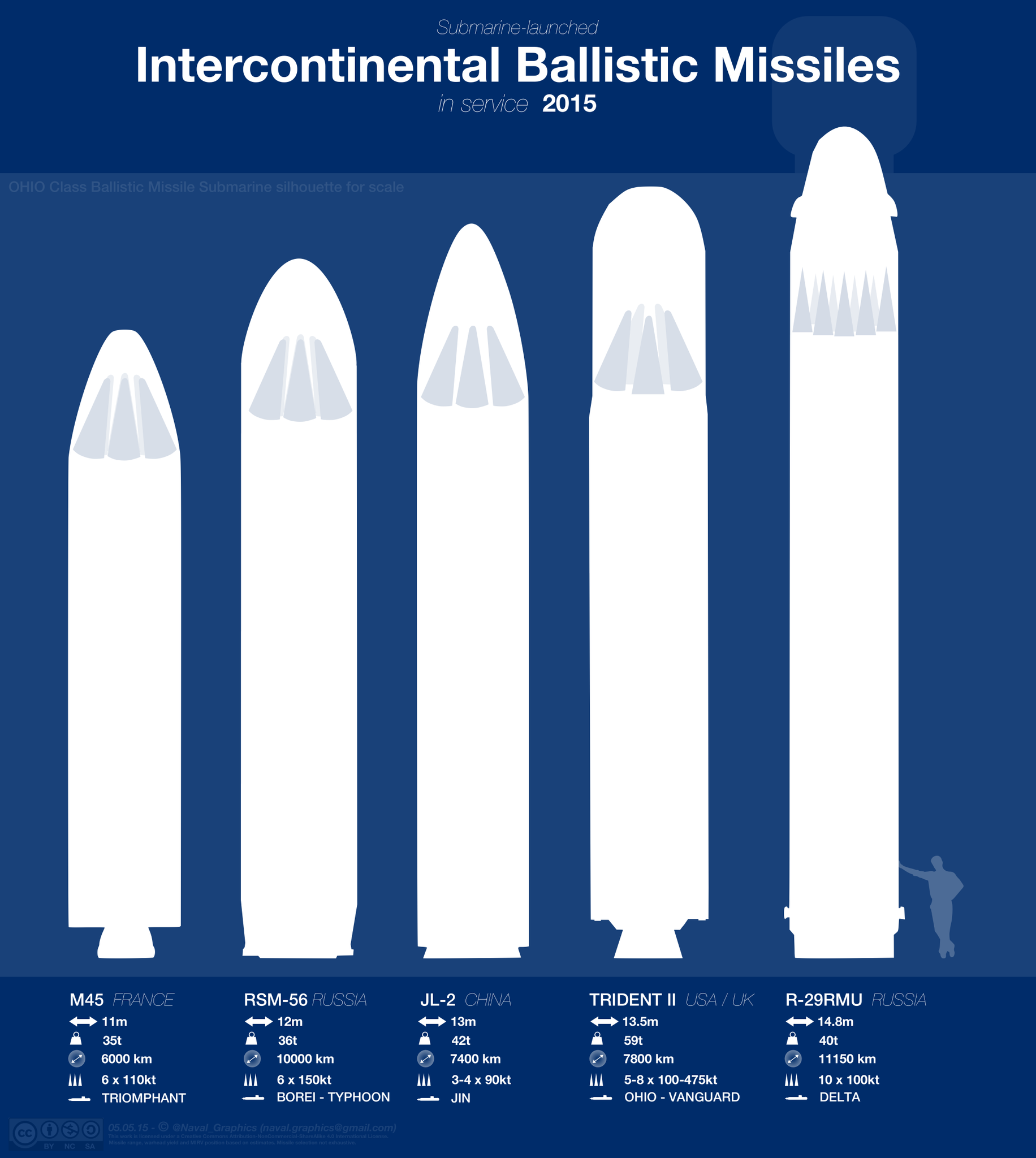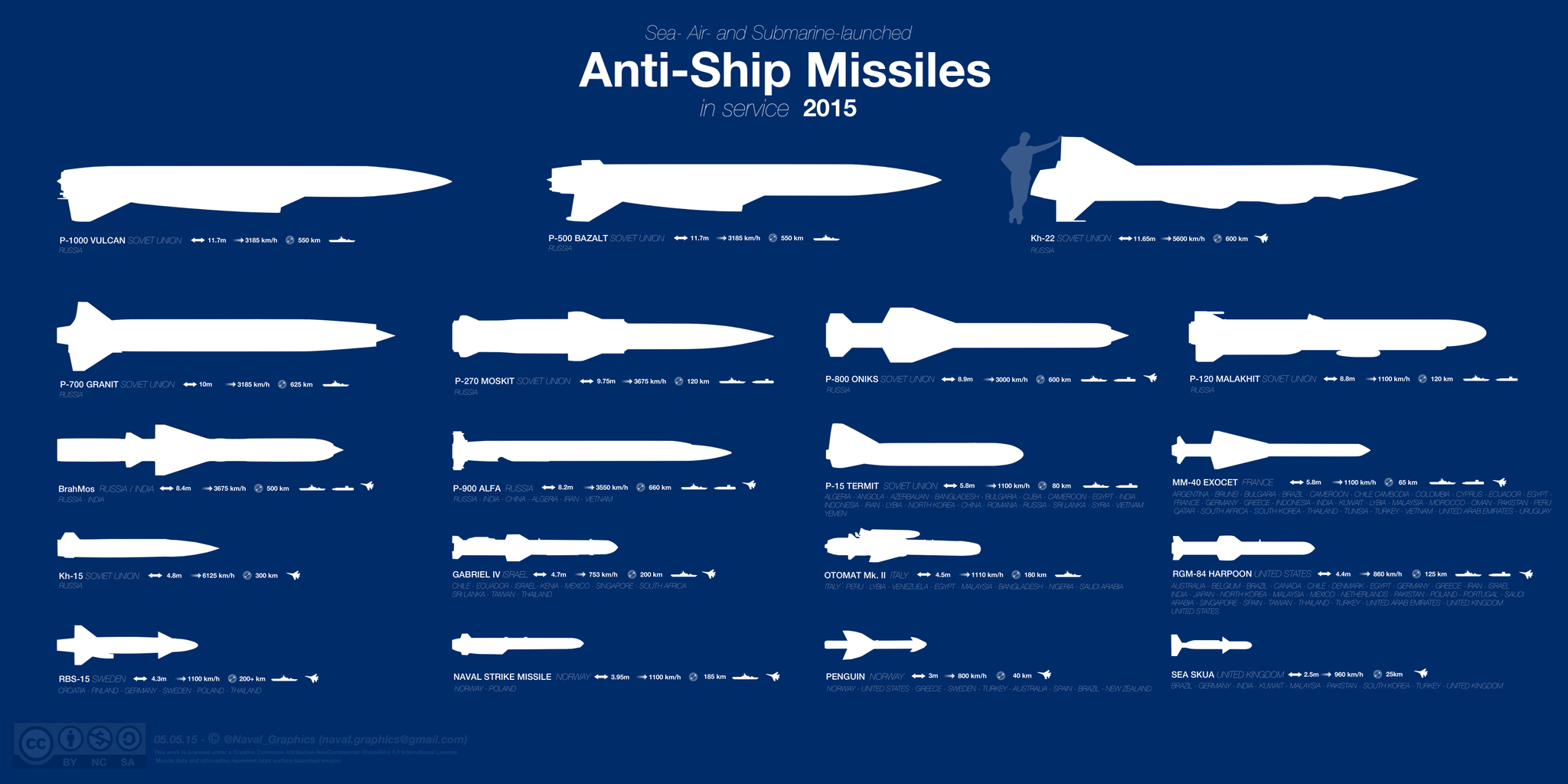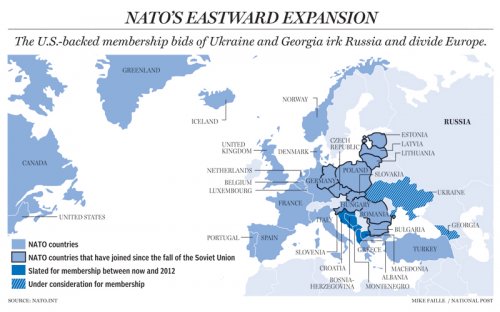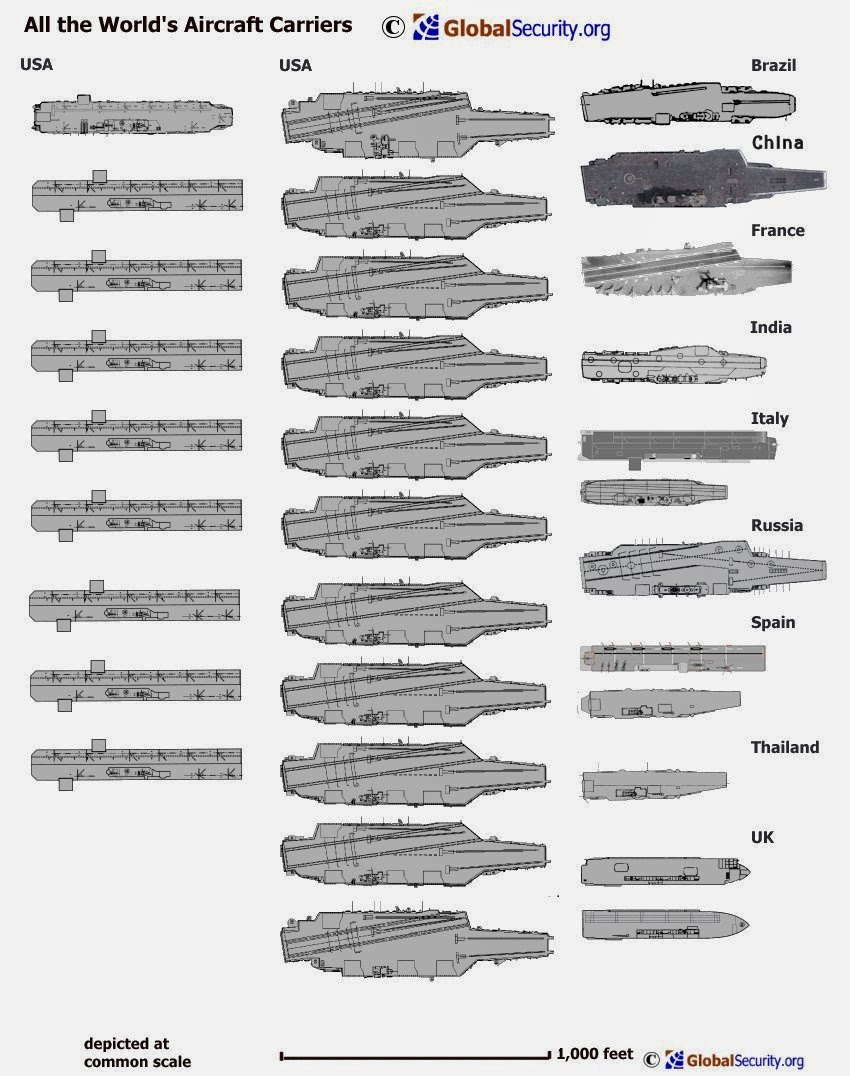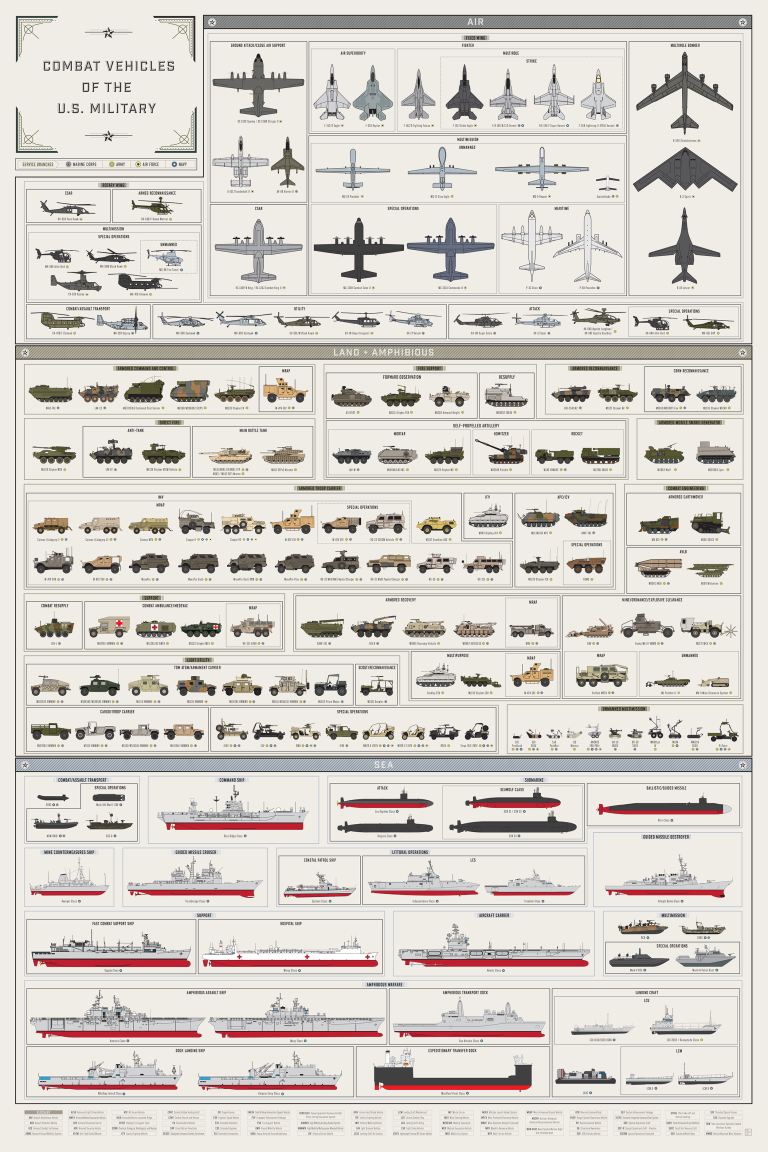You are using an out of date browser. It may not display this or other websites correctly.
You should upgrade or use an alternative browser.
You should upgrade or use an alternative browser.
All US Navy Ships in One Chart
- Thread starter bobbymike
- Start date
An interesting comparison:
Quiet Images of Great Loss and Heroism--British Navy Losses, 1945A rather more artistic representation of every ship the Brits lost from the beginning of WWII to VE Day. Interestingly, the Brits lost about four times as many ships in WWII as the US Navy has in service today.
Also includes a chart showing all the RN losses in WWI, which looks a lot more like the US Navy ship chart.
Quiet Images of Great Loss and Heroism--British Navy Losses, 1945A rather more artistic representation of every ship the Brits lost from the beginning of WWII to VE Day. Interestingly, the Brits lost about four times as many ships in WWII as the US Navy has in service today.
Also includes a chart showing all the RN losses in WWI, which looks a lot more like the US Navy ship chart.
- Joined
- 3 June 2011
- Messages
- 17,283
- Reaction score
- 8,943
bobbymike said:
They should have thrown up Lehman's 600-ship navy next to it. Kinda depressing.
- Joined
- 4 July 2010
- Messages
- 2,217
- Reaction score
- 2,099
sferrin said:They should have thrown up Lehman's 600-ship navy next to it. Kinda depressing.bobbymike said:
Well if we're doing works of fiction, I vote for the Imperial Starfleet.
- Joined
- 21 April 2009
- Messages
- 13,138
- Reaction score
- 5,950
Moose said:sferrin said:They should have thrown up Lehman's 600-ship navy next to it. Kinda depressing.bobbymike said:
Well if we're doing works of fiction, I vote for the Imperial Starfleet.
Are you serious with that comment? You're ACTUALLY saying that the 80's shipbuilding plan is comparable to Star Trek?
Rather than engage is silly and meaningless 'trolliing' with inane comments why not add a real analysis of why you think sferrin's statement is fiction? Discuss the Navy's plan in the 80's, fleet size, composition, budget, etc. your comment adds nothing.
You know the members on this board do not mind intellectual discourse. You do us all a disservice by making the type of comment you made.
- Joined
- 3 June 2011
- Messages
- 17,283
- Reaction score
- 8,943
Moose said:Well if we're doing works of fiction, I vote for the Imperial Starfleet.
Works of fiction?
http://en.wikipedia.org/wiki/600-ship_Navy
It was 594 in 1987 but hey, keep impressing with your uninformed remarks.
http://www.history.navy.mil/research/histories/ship-histories/us-ship-force-levels.html#1986
- Joined
- 9 October 2009
- Messages
- 19,748
- Reaction score
- 10,200
Guys, I think he was talking about the current Navy 'plan'.
- Joined
- 3 June 2011
- Messages
- 17,283
- Reaction score
- 8,943
Grey Havoc said:Guys, I think he was talking about the current Navy 'plan'.
Why would you think that? I was speaking of Lehman's 600 ship navy. I even said so.
sferrin said:Grey Havoc said:Guys, I think he was talking about the current Navy 'plan'.
Why would you think that? I was speaking of Lehman's 600 ship navy. I even said so.
It would be interesting to compare the United States Navy chart to the Lehman Plan of 2012.
While Romney and other campaign officials have pledged to raise the number of ships built per year from nine to “approximately 15,” aimed at a fleet of about 350 ships, specifics on how they would add more than 60 ships, and what types, have been vague.
But in an exclusive interview, a top Romney defense adviser provided some details on the ambitious plans for the Navy.
John Lehman, President Ronald Reagan’s 600-ship-era Navy secretary and one of the architects of Romney’s plans for the military, sat down with Defense News on Oct. 4.
Among the new details he revealed: Plans to create an 11th carrier air wing, one for each aircraft carrier. F/A-18 Super Hornet strike fighter production would continue beyond 2014. The amphibious fleet would be built up to the Marine Corps’ requirement of 39 ships. An entirely new, battle-group-deployable frigate would be procured, along with a ballistic missile defense ship.
The campaign has pledged to build more submarines and destroyers, and production of the littoral combat ship (LCS) would continue. Exact numbers of ships and aircraft continue to be reviewed, and Lehman made it clear the program continues to be evaluated and fleshed out.
Source:
http://archive.defensenews.com/print/article/20121007/DEFREG02/310070001/Mitt-Romney-8217-s-Big-Plans-U-S-Navy
- Joined
- 3 June 2011
- Messages
- 17,283
- Reaction score
- 8,943
I'd be happy with them just filling out the carrier wings we do have to their proper size. The Nimitz and Ford classes are designed for wings of ~90 aircraft. IIRC none of them carry even close to that these days.
Did they really have to include U.S.S. Pueblo (AGER-2) in the fleet chart? : Then we have the museum ship U.S.S. Constitution.
Then we have the museum ship U.S.S. Constitution.
- Joined
- 4 July 2010
- Messages
- 2,217
- Reaction score
- 2,099
The "600 ship" mark was not an estimate or approximation, it was a politically-mandated definitive goal. The plan was to reach that number in 1992, with the 1996 fleet being the "finished product." In fact the failure to reach that exact goal of 600 ships was a political black mark which the Hawks used to paint Bush I as too soft prior to the Gulf War, despite the decision to scale back the build-up having come before he was elected (late '87).sferrin said:Moose said:Well if we're doing works of fiction, I vote for the Imperial Starfleet.
Works of fiction?
http://en.wikipedia.org/wiki/600-ship_Navy
It was 594 in 1987 but hey, keep impressing with your uninformed remarks.
http://www.history.navy.mil/research/histories/ship-histories/us-ship-force-levels.html#1986
But really when I call the 600 ship Navy fiction I'm saying so because there was not a plan for a 600 ship Navy, there was a plan for a buildup to reach the political goal of having 600 ships in service but no plan for sustaining a functional Navy of that size for any amount of time. This is why the concept died, because in '86 the political and military leadership realized reaching and sustaining the 600 ship goal would require a 5% per year increase in the Navy topline budget on top of the funds already appropriated to construct, convert, or recondition the ships.
The sad thing is the existing plan to rebuild and sustain a 534 ship navy was well constructed and could have been adequately funded without the dramatic funding challenges presented by the 600 ship buildup. But 534 isn't as "sexy" as 600...
Hot Breath
I really should change my personal text
- Joined
- 11 March 2014
- Messages
- 196
- Reaction score
- 8
How many of the 600 ship navy were to be antiquated hulks kept in service long past their useful date? I remember reading in the 1980s comments about the Gearing class DDs which were still in service, long after their use-by-date had been passed. Thats one of the problems with politically mandated numbers over militarily useful ones. Of course, it also shows that some people don't seem to care that the Cold War had finished and so the need for a navy that large had passed.
The United States Navy may be the largest, most powerful navy in the world, with the highest combined battle fleet tonnage, but it also has a lot of commitments across the globe. Since 1990, NATO has expanded eastward and we now have the Asia Pivot to curb Chinese ambitions in the Pacific. Then there are the multiple trouble spots around the globe in which the world relies on United States military power to maintain the Pax Americana. With 272 deployable ships and more than 3,700 aircraft in service as of March 2015, the question is--Does the United States Navy have enough ships to meet treaty and diplomatic commitments across the globe? It seems that naval budgets have been shrinking since the George HW Bush Administration while diplomatic commitments for defense have increased. The United States Navy has continually been asked to do more, with less resources.
I don't know if anyone believed that the United States Navy would ever have 600 deployable ships, but the "600-ship Navy" was a good slogan to address what was believed to be neglect of the fleet during the Nixon, Ford, and Carter Administrations.
Source:
http://stratrisks.com/geostrat/12661
I don't know if anyone believed that the United States Navy would ever have 600 deployable ships, but the "600-ship Navy" was a good slogan to address what was believed to be neglect of the fleet during the Nixon, Ford, and Carter Administrations.
Source:
http://stratrisks.com/geostrat/12661
Attachments
NeilChapman
Interested 3rd party
- Joined
- 14 December 2015
- Messages
- 1,282
- Reaction score
- 476
Triton said:The United States Navy may be the largest, most powerful navy in the world, with the highest combined battle fleet tonnage, but it also has a lot of commitments across the globe. Since 1990, NATO has expanded eastward and we now have the Asia Pivot to curb Chinese ambitions in the Pacific. Then there are the multiple trouble spots around the globe in which the world relies on United States military power to maintain the Pax Americana. With 272 deployable ships and more than 3,700 aircraft in service as of March 2015, the question is--Does the United States Navy have enough ships to meet treaty and diplomatic commitments across the globe? It seems that naval budgets have been shrinking since the George HW Bush Administration while diplomatic commitments for defense have increased. The United States Navy has continually been asked to do more, with less resources.
I don't know if anyone believed that the United States Navy would ever have 600 deployable ships, but the "600-ship Navy" was a good slogan to address what was believed to be neglect of the fleet during the Nixon, Ford, and Carter Administrations.
Source:
http://stratrisks.com/geostrat/12661
Good points. I seem to remember another country with an extremely large Navy that wasn't able to project power for a war with a little country in early 1800's.
The US needs to not only sustain an adequate military but invest in statecraft, intelligence and soft power.
- Joined
- 3 June 2011
- Messages
- 17,283
- Reaction score
- 8,943
Triton said:I don't know if anyone believed that the United States Navy would ever have 600 deployable ships, but the "600-ship Navy" was a good slogan to address what was believed to be neglect of the fleet during the Nixon, Ford, and Carter Administrations.
We came VERY close. IIRC it peaked at ~587 or thereabouts. To include 100 SSNs, 15 CVBGs, 4 BBs, 18 SSBNs, etc.
Yellow Palace
ACCESS: Top Secret
- Joined
- 5 May 2007
- Messages
- 1,020
- Reaction score
- 1,626
They can top out at nearly 100, but you have to launch them in the reverse order of how they landed if you do that, and it's only really warranted if you're expecting to take double-digit losses on each strike against the Soviet mainland. For more sensible applications, 84 aircraft per ship is apparently optimum. And the requirement for 15-16 ships hasn't gone away... the ships have, but the requirement hasn't.sferrin said:I'd be happy with them just filling out the carrier wings we do have to their proper size. The Nimitz and Ford classes are designed for wings of ~90 aircraft. IIRC none of them carry even close to that these days.
Hot Breath said:How many of the 600 ship navy were to be antiquated hulks kept in service long past their useful date? I remember reading in the 1980s comments about the Gearing class DDs which were still in service, long after their use-by-date had been passed. Thats one of the problems with politically mandated numbers over militarily useful ones. Of course, it also shows that some people don't seem to care that the Cold War had finished and so the need for a navy that large had passed.
The 600 ship Navy was always a marketing gimick. One would hope people on this forum wouldn't fall for such simplistic numerical comparisons, but there you have it. Mostly 1950s-1960s designs that were kept around way past their expiration date, and mostly small frigates and WW2-sized destroyers. 1 Burke > 20 Adams class destroyers. Of course, as the ships themselves become much more capable and technologically advanced, you're not going to be able to build as many. But that would be the equivalent of saying that we had 50,000 fighters in service in WW2, and now only have 3,000 in service, which means we are far less capable than in WW2.
By that logic, China's Navy is also shrinking dramatically since it had a lot more "ships" in the past than today. They were rust buckets, but they had "more".
Not to mention the geopolitical changes. The Russian Navy is barely 1/20th the size it was before. Our ally's navies are much bigger than they were in the past as well. Which means less burden on the USN to keep their shipping lanes safe.
But of course, politics will be politics, and people will continue to use marketing gimmicks like this.
PS: Not that the USN was wrong in keeping antiquated hulls in service way past their sell by date, at the time. The Soviets almost never retired anything either. But that's clearly not a very good strategy in today's world.
Colonial-Marine
UAVs are now friend, drones are the real enemy.
- Joined
- 5 October 2009
- Messages
- 1,187
- Reaction score
- 681
Of course a ship can't be in multiple places at once so numbers also becomes a necessary requirement at some point. So where should the Navy draw the line? I think a 300 ship Navy is an entirely reasonable and achievable goal, especially considered that our world-wide commitments haven't exactly decreased with the end of the USSR.
Who among our allies have much bigger navies than they did circa 1988? Maybe Japan and maybe South Korea, but the Royal Navy has only decreased in size in recent years.
Who among our allies have much bigger navies than they did circa 1988? Maybe Japan and maybe South Korea, but the Royal Navy has only decreased in size in recent years.
Colonial-Marine said:Of course a ship can't be in multiple places at once so numbers also becomes a necessary requirement at some point. So where should the Navy draw the line? I think a 300 ship Navy is an entirely reasonable and achievable goal, especially considered that our world-wide commitments haven't exactly decreased with the end of the USSR.
Who among our allies have much bigger navies than they did circa 1988? Maybe Japan and maybe South Korea, but the Royal Navy has only decreased in size in recent years.
Of course the ability to be in different parts of the world matters. I'm not sure I see that the USN is being stretched beyond their abilities here (of course the USN will claim it is, no military in the world ever said they have enough assets), considering that the threat they face is a small fraction of what it was in the 1980s. Talking about size, while forgetting that the threat has shrunk by 50x, doesn't make much sense to me.
The main reason the USN needed a much larger force in the 80s was the Soviet submarine fleet. The Soviets had hundreds of subs which could patrol anywhere in the world, and the USN needed assets to be able to escort ships across the Atlantic or Pacific in case of a war. Which is why the vast majority of the USN in the 1980s was comprised of dedicated ASW platforms (Knox, Spruance etc.) With that threat gone off the scrap yard, the reason for so many ships is no longer there.
The Royal Navy had the same thing: most of its ships were small ASW specialized frigates. The need for such fleets is no longer there. And yes, Japan, South Korea, various European navies (Italian, Spanish, Greek, Turkish, some Scandinavians, maybe French), various ME (allied) navies, have all grown in size and certainly have exploded in capabilities.
bobbymike said:http://nationalinterest.org/blog/the-buzz/watch-out-america-china-may-have-415-warships-by-2030-12979
:
Here's a sobering way of looking at it: forget the number of hulls. Look at the capabilities of the ships. Lets say, look at the number and types of anti-aircraft weapons carried by the fleet. The combined total of the Chinese Navy (current and planned hulls), has a combined volume of about 2,300 surface-air missiles of the long-range and medium-range type. Most of these are the naval Buk variant, and some the S-300 naval variant.
The other Asian navies in the region: Japan, Korea, Taiwan, Australia, have a combined volume of about 4,400 surface-air missiles in their ships (and planned ships), and much higher capability missiles like SM-2/6 as well. That's nearly double the firepower of the Chinese navy. USN has about 11,000 VLS tubes installed (which depending on the mix of missiles, quad-packed ESSMs etc, could be anywhere from 5-20 times more installed missile capacity). Not to talk about the quality of the ships, the aircraft carriers, all the force multipliers.
Numerically in terms of ships, the Chinese Navy and the other Asian Navies are at about the same number of about 50 major surface combatants, by the other Asian navies have about twice the firepower.
The Chinese Navy is dwarfed by its neighbors, never-mind the USN, in terms of capability.
Which highlights the flaw in the "600 ship navy" vs today comparison. Today's USN has way more capability than the 1980s Navy could dream of, regardless how many ships it has. And in comparison to its potential adversaries, it is several times more capable than it was.
PS: By comparison, the Russian Navy of today has only about 1,100 medium/long-range SAM capability in its navy. The combined European navies, are at about 3,100, or 3 times the Russian Navy's.
- Joined
- 21 April 2009
- Messages
- 13,138
- Reaction score
- 5,950
- Joined
- 21 April 2009
- Messages
- 13,138
- Reaction score
- 5,950
One WWII shipyard. Yes much different than today but interesting nonetheless imho.
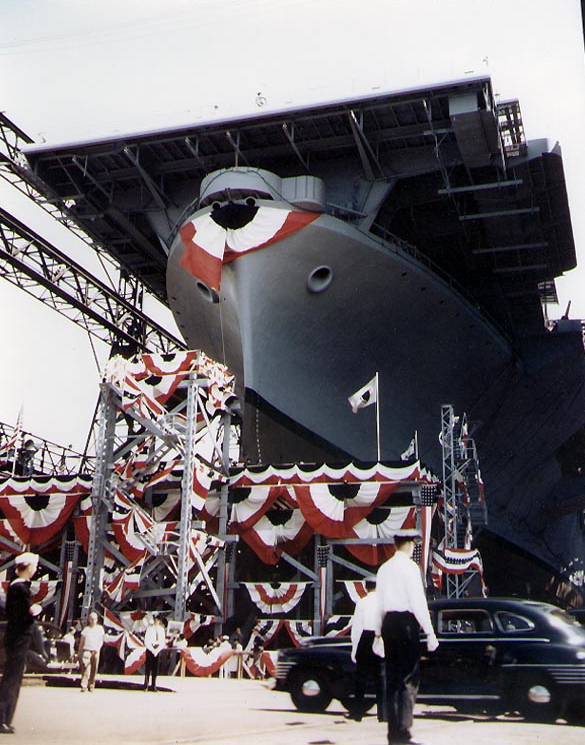
 navalhistoria.com
navalhistoria.com

Bethlehem Steel - The Colossus of American Maritime Industry -
During World War II, Bethlehem Steel Corporation emerged as a linchpin in America's naval shipbuilding efforts, producing a vast array of vessels crucial
 navalhistoria.com
navalhistoria.com
Similar threads
-
-
-
Royal Navy Future Surface Combatant (FSC) until mid-2004
- Started by Triton
- Replies: 0
-
-

